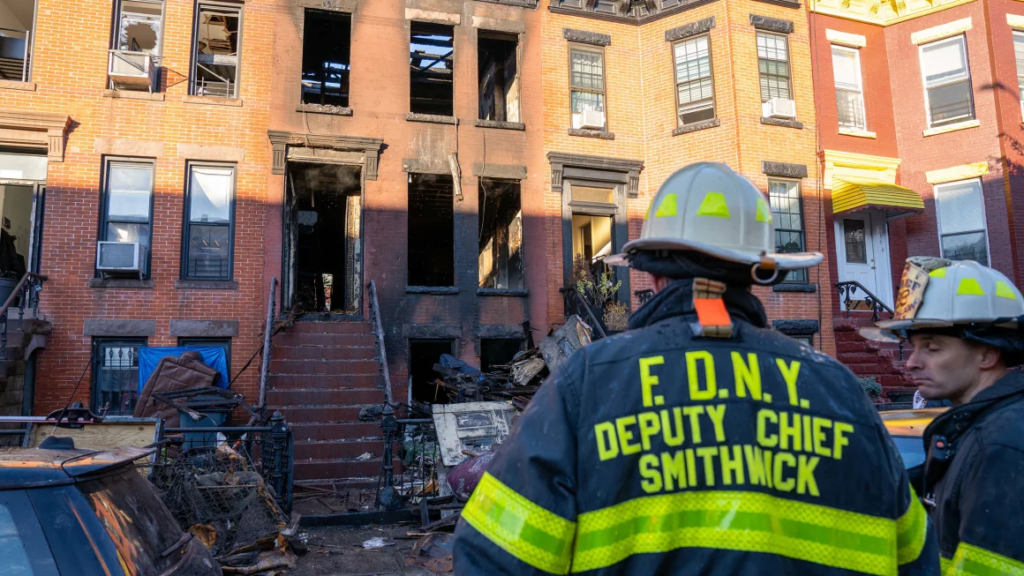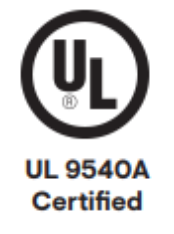Battery Fires: Why Are UL5940A and UL5940 Important?
Batteries are a critical component of our move to a clean energy economy. Typically called Energy Storage Systems (or ESS) or BESS (Battery Energy Storage Systems), such systems are used to store solar power produced during the day so that it can be used overnight or on days with minimal sunshine. Battery systems are now being built on extremely large scales, but they are also available for your home as well.
A home BESS not only provides a way to “shift the sun,” but it is also an emergency backup system when the grid goes down. Unlike fossil fuel generators, batteries are silent, and they offer instantaneous switching from grid to battery (they switch so fast, your digital clocks will not start blinking!). And of course, they can be recharged by your solar panels – even during a power outage. From an ongoing service perspective, they have no moving parts and hence need little upkeep or service.
However, batteries, like any newer technology, offer a lot of “new and different” aspects – and not all of them are good. Specifically, batteries can, if not tested or installed correctly, present a fire risk. It’s important to note that this is also true of the fossil fuels we use, for example propane or heating oil, but we have learned how to deal with them safely. We can learn to do the same with batteries, but it will require us all to be aware of the possible pitfalls and make sure we use the proper equipment and have it installed correctly.
For example, most everyone has heard of the destruction and even death that has been caused by batteries, in most cases scooter batteries, over the last few years. The instances of such tragic events have been particularly prevalent in big cities like New York.

As the NY Times said in its article titled How E-Bike Battery Fires Became a Deadly Crisis in New York City (published in June ’23):
“Reasons for the uptick of these fires are myriad. They include a lack of regulation and safety testing for individually owned devices, hazardous charging practices (like using mismatched equipment or overcharging) and a lack of secure charging areas in a population-dense city with numerous residential buildings, where most fires start.”
 This summary points to a major issue with typically small, less than 1 kilowatt-hour lithium batteries. These low-cost E-Scooter/E-Bike Batteries are in a currently unregulated battery category, are often untested, and are often the product of a low-quality manufacturing process. They are also often overused and improperly charged (a point also noted in the article).
This summary points to a major issue with typically small, less than 1 kilowatt-hour lithium batteries. These low-cost E-Scooter/E-Bike Batteries are in a currently unregulated battery category, are often untested, and are often the product of a low-quality manufacturing process. They are also often overused and improperly charged (a point also noted in the article).
Conversely, the BESS or Battery Energy Storage Systems that are typically sold as part of a solar array are exceptionally different. That is because such batteries are regulated, tested, and are the product of a highly controlled manufacturing process. They are also fully integrated systems, meaning you could not charge it using some other unmatched charger.
How To Know If a Battery Is Safe?
In a nutshell, any battery you are offered should have a UL 9540 listing, which it earns through completing a UL 9540A testing process. The Underwriters Laboratory testing includes many tests at four distinct levels, including destructive tests in which they try to make it catch fire. Further, it should only be installed to the specifications as outlined in the manufacturer’s installation manual and only by a professionally trained electrician.
What Does UL 9540 Cover?
UL 9540 is a standard that addresses the risk of fire or explosion associated with any ESS connected to the utility grid. And because an ESS includes multiple components, the UL 9540 standard also includes two other older standards: UL 1973 (for stationary battery packs) and UL 1741 (for the inverter). Those two standards, in combination with additional rigorous thermal and electrical testing, make up the UL 9540 certification.
What Is the UL 9540A Testing Method
The UL 9540A Testing Method is quite exhaustive. If you Google it, you can find all sorts of videos on it, most posted by testing laboratories. As noted above, some of the videos will involve fire and some explosions. But there is a real structure to it and at the highest level includes four stages:
- Cell testing – a battery is tested at its smallest component, each battery cell (think AAA or D size as an example). They are tested for flammability, whether they are subject to thermal runaway, and what is in any gases that are released.
- Modular testing – a group of cells that make up a module are tested to see if they, because of their proximity in the design, will exhibit a propensity to cause a fire at a group level.
- Unit testing – a unit, or grouping of modules that make up a complete battery unit, are tested to see if they as a unit will create a fire that will spread from one unit to another unit
- Installation test – And as a final test, determine the propensity of fire spreading from one unit to another unit in a closed room
Is UL 9540 Certification Required?
At the time this post was written, certification of an ESS to UL9540 is not required in most of the United States. It is required in California and Massachusetts. Which means if you are interested in a home ESS, you should be sure that it is not only from a reputable installer and manufacturer, but also comes with a UL 9540 certification. In most cases, batteries are safe and will not cause a fire. But making sure that the battery you buy has been fully tested is one big step we can all take in ensuring that “new and different” is also “tried and true.”
If you liked this article, you may also like:
Do Solar Panels Work in the Winter?
Another Year Under the Sun: Our 2023 in Review
New Ebook! Your Solar Journey: From Installation to Energy Independence





No comments yet. You should be kind and add one!
By submitting a comment you grant The Energy Miser a perpetual license to reproduce your words and name/web site in attribution. Inappropriate and irrelevant comments will be removed at an admin’s discretion. Your email is used for verification purposes only, it will never be shared.